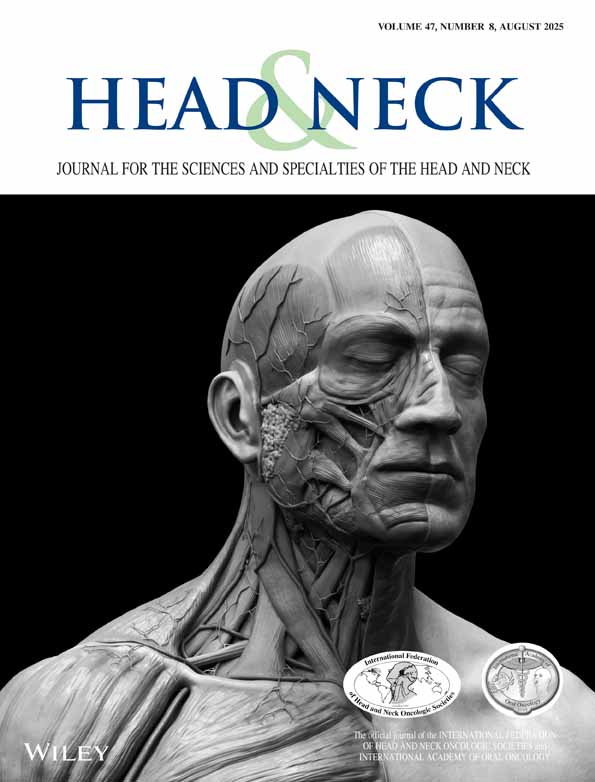T1 and T2 squamous cell carcinoma of the oral tongue: Prognostic factors and the role of elective lymph node dissection
Abstract
Background
The management of micrometastatic disease from squamous cell carcinoma (SCC) of the oral tongue remains controversial. This study describes prognostic factors in the disease and reviews the role of elective neck dissection (END).
Methods
A retrospective analysis of all patients undergoing definitive surgical treatment of T1 and T2 SCC of the oral tongue between 1956 and 1994 at the University of Alabama at Birmingham was performed.
Results
Patient, disease, and treatment variables were compiled for 169 patients. Multivariate analysis showed age (p = .02), sex (p = .02), disease differentiation (p = .0003), and palpable lymphadenopathy (p = .02) to be significant prognostic variables. Fifteen patients underwent END and 6 were shown to have micrometastatic disease (40.0%). There were no neck recurrences in these patients, but END was not shown to improve survival.
Conclusions
The presence of poorly differentiated disease gave the worst prognosis in this population of patients with T1 and T2 SCC of the oral tongue. A high incidence of nodal micrometastatic disease and the absence of recurrent disease after END suggest that END is appropriate therapy for these patients. © 1999 John Wiley & Sons, Inc. Head Neck 21: 124–130, 1999.




